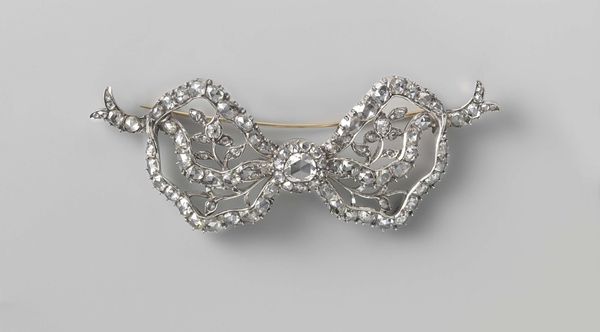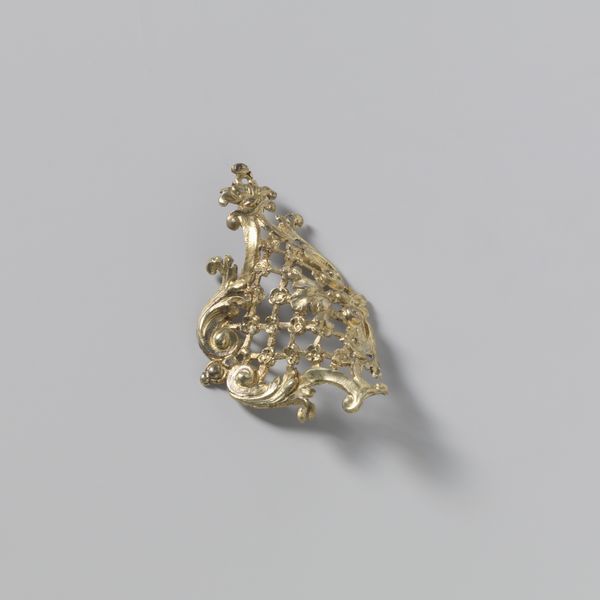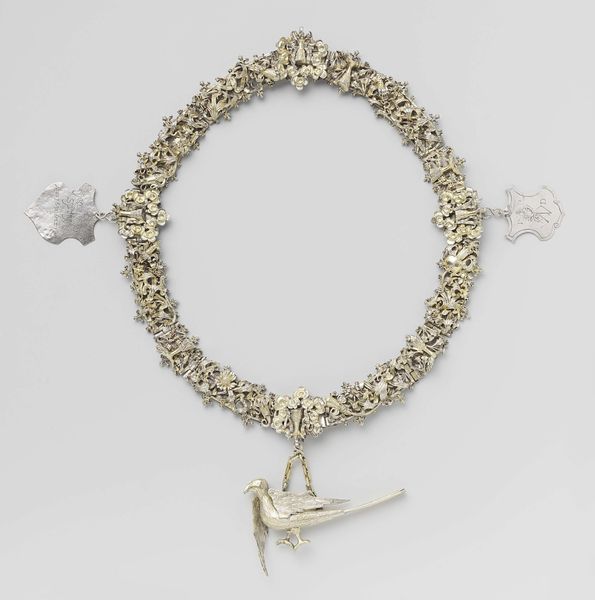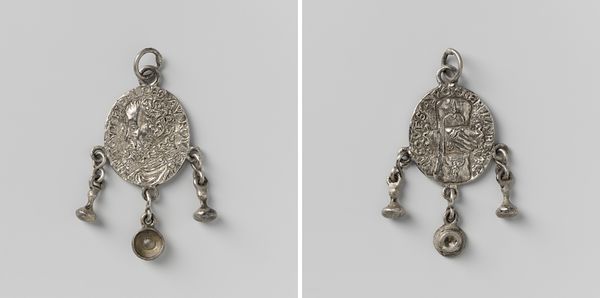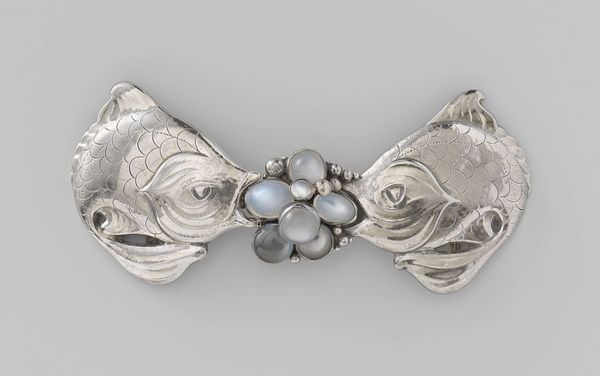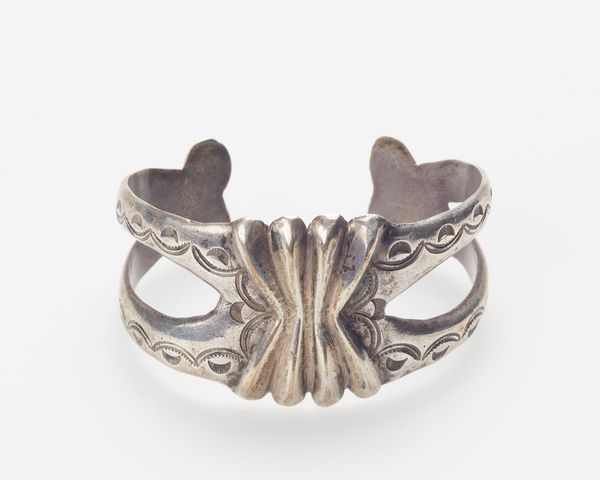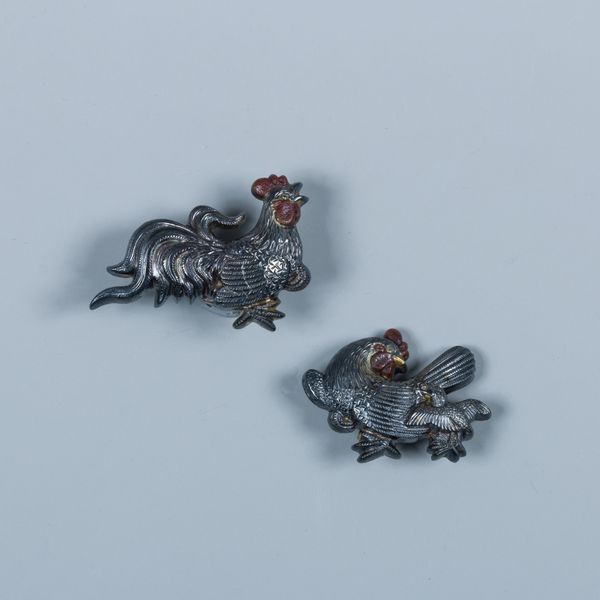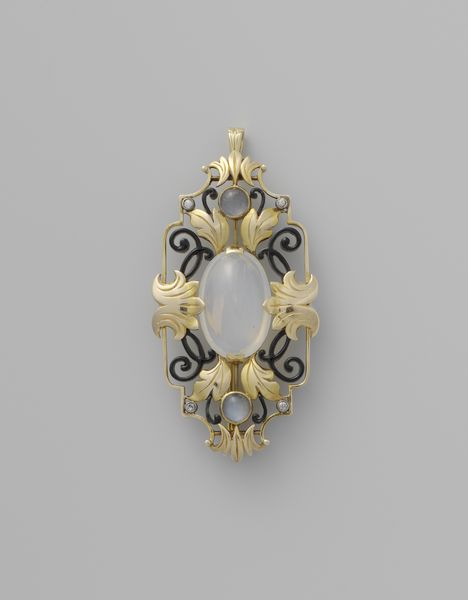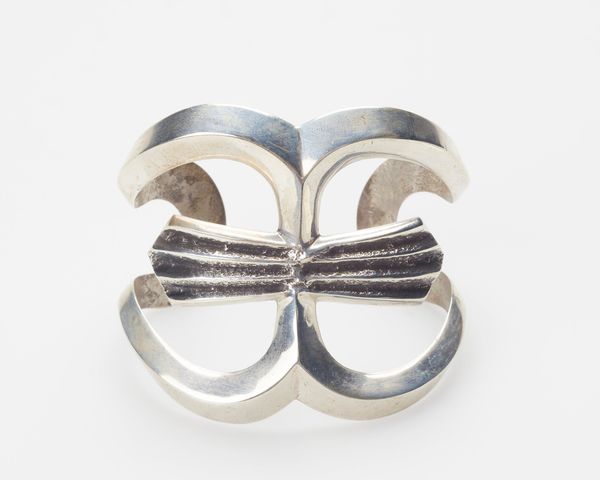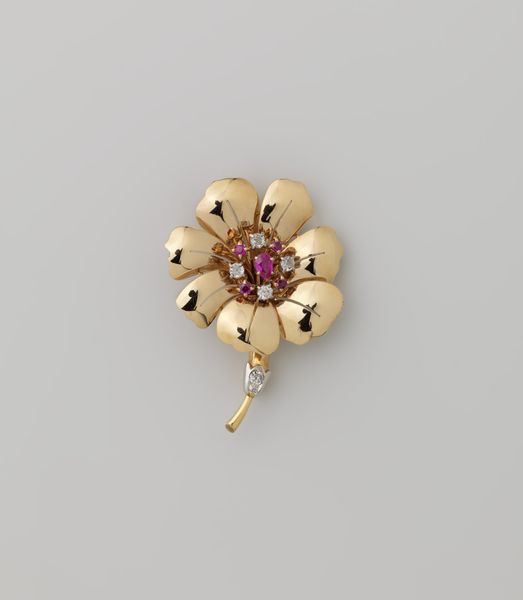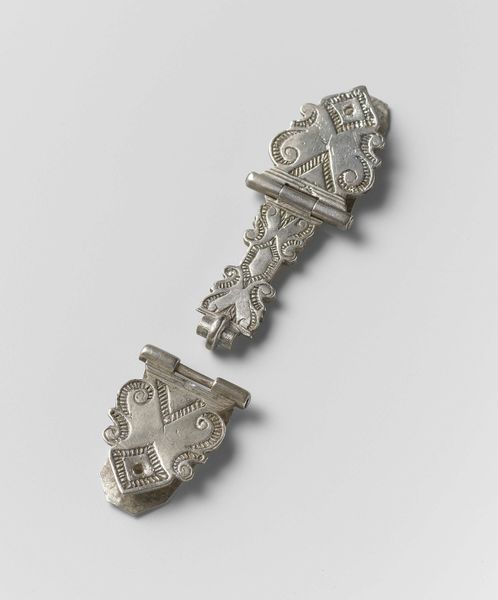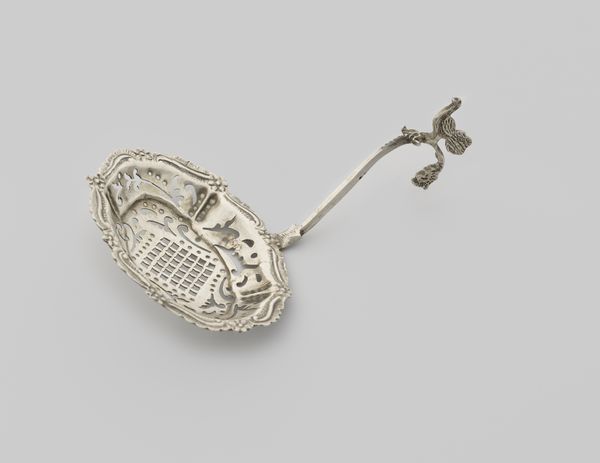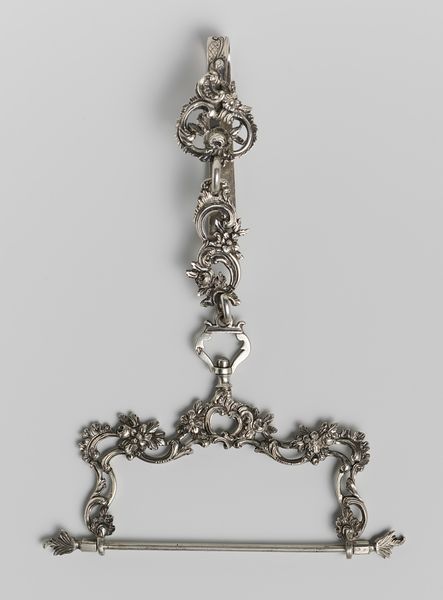
silver, metal
#
organic
#
art-nouveau
#
silver
#
metal
#
jewelry design
#
form
#
decorative-art
Dimensions: height 12.9 cm, diameter 8 cm, weight 98 gr
Copyright: Rijks Museum: Open Domain
Curator: I’m struck by the way this cape clasp, crafted in 1899, embodies the Art Nouveau spirit through organic form. The maker, Ferdinand Erhart, designed it with incredible sensitivity, even including the original presentation case by Vever. Editor: The reflective nature of the metal—probably silver—immediately catches my eye. It gives off a shimmering quality, especially around the meticulously worked floral motifs. I’m curious about the specific techniques used to create that level of detail. Curator: Precisely. Looking closer, one sees stylized thistles and their leaves dominating the design, pointing towards questions around Scottish identity. During the late 19th century there was considerable romanticizing of the past, often expressed via jewelry design of that era. The choice of flora becomes less about mere decoration and more about signifying cultural affiliation. Editor: Considering it's silver, how often would this clasp have actually been used? Was it daily wear, or something more ceremonial? The intricate details suggest luxury and careful crafting, so it probably wasn’t casually tossed on garments. What does that say about class, status and access to luxury goods at that time? Curator: That tension you’ve highlighted is what makes this piece fascinating. The materiality and the craft involved definitely elevate its status, positioning it as an item of wealth, perhaps worn to outwardly demonstrate social standing and adherence to these cultural symbols in elite circles. Who were these people commissioning or wearing pieces like this? Editor: The contrast between the smooth, reflective surfaces and the detailed textures would also affect its price point and desirability. Silver requires upkeep. Did Erhart intend to communicate something via the way it might age over time? How would the process of polishing and caring for this metal change the piece's symbolic meaning over time for the wearer? Curator: By drawing on materiality and linking this object to production, class and wear, we reveal its place in wider political and societal networks, rather than just viewing this item for its surface-level beauty. Editor: Yes, moving beyond the decorative aspect, this item encourages discussions around labor and value. Curator: Ultimately, this accessory embodies not only craftsmanship and wealth, but also hints at a need to express belonging during a time of evolving identities. Editor: Right. And thinking about all the labor and context around such objects reveals deeper complexities concerning wealth and status within a specific culture.
Comments
No comments
Be the first to comment and join the conversation on the ultimate creative platform.
